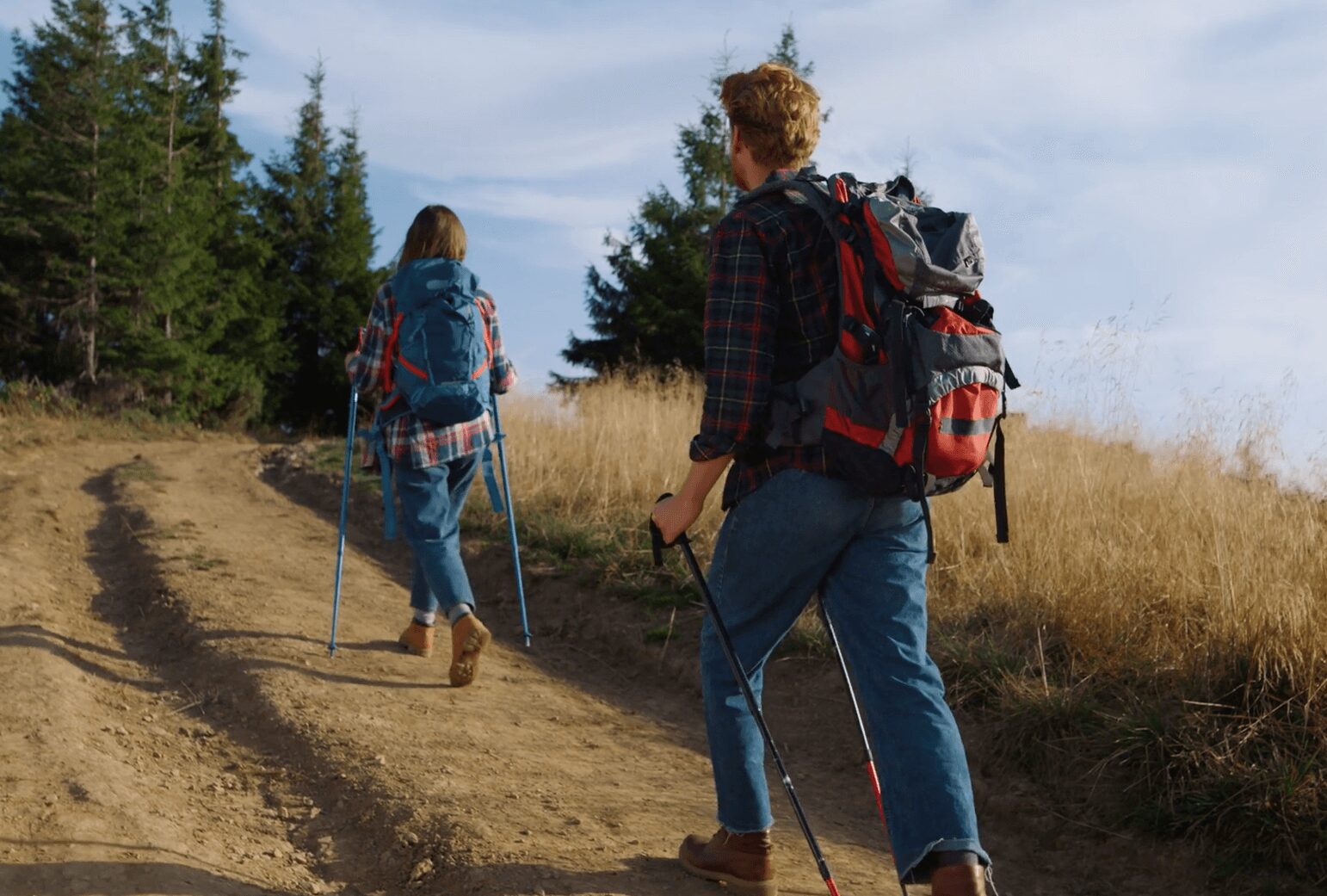So, you’re planning a hike? Fantastic! The key to an enjoyable hiking experience lies in what you wear. Seriously, it’s what can make or break your trip.
From head to toe, the right gear can make the difference between a fantastic adventure and a miserable trudge through nature. Let’s break it down, piece by piece.
Comfort is King
When hitting the trails, comfort should be your top priority. Comfortable hiking attire isn’t just a nice-to-have; it’s essential.
Trust me, nothing ruins a hike faster than clothes that chafe or shoes that give you blisters. Let’s start with some basics.
Ditch the Cotton and Denim
First things first, avoid cotton and denim at all costs. These materials might be staples in your everyday wardrobe, but on the trail, they’re a disaster waiting to happen.
Cotton absorbs moisture, leaving you sweaty and uncomfortable in the heat or freezing when it cools down. Denim? Just as bad. Stick to fabrics designed to keep you dry and comfy.
Layering Is Highly Important
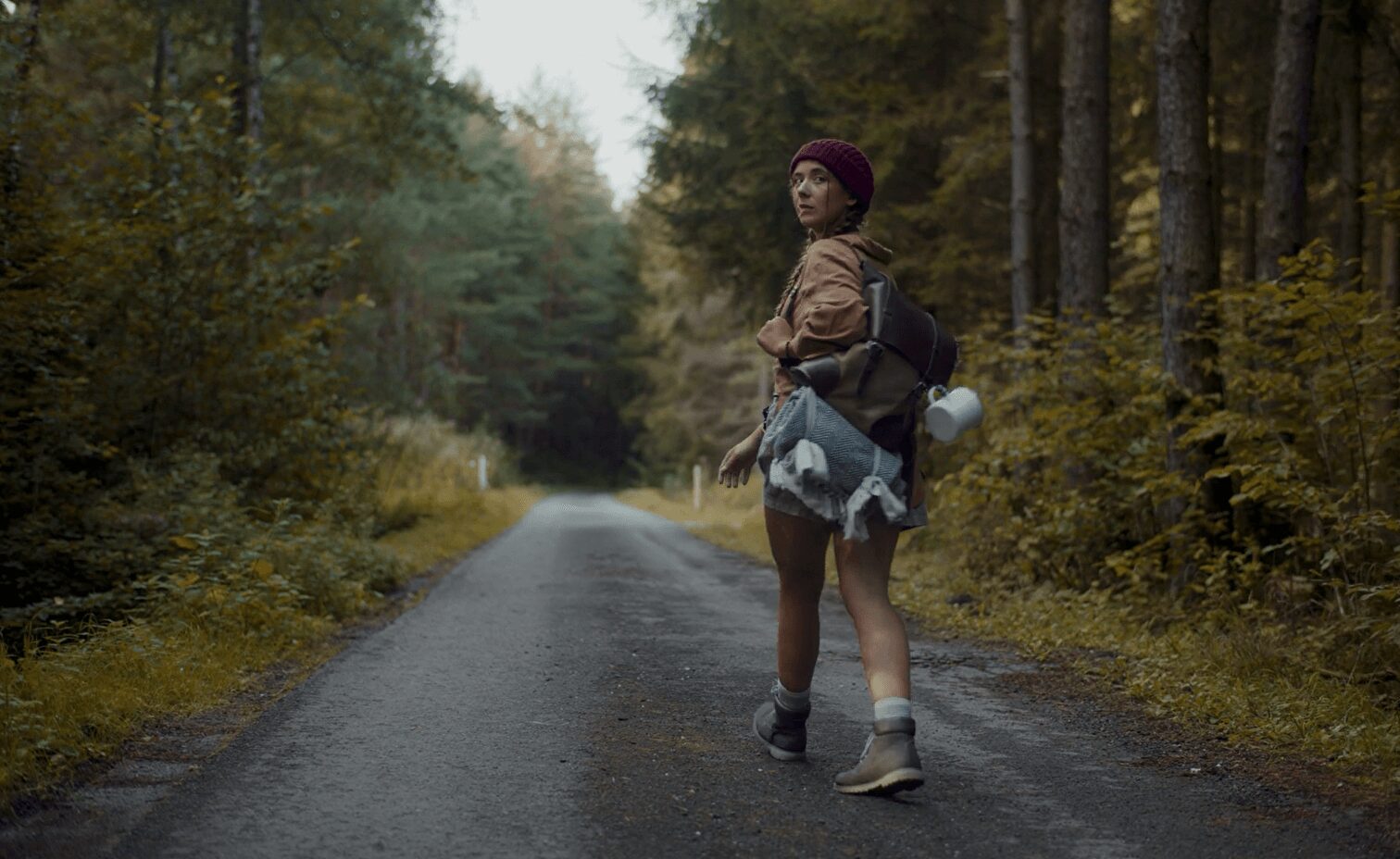
Layering is your best friend when it comes to hiking attire. Weather can be unpredictable, and layers let you adapt on the fly.
- Base Layer: Choose moisture-wicking materials like polyester, nylon, or merino wool. These fabrics keep sweat away from your skin, keeping you dry and comfortable.
- Mid-Layer: Think fleece or an insulated jacket. This layer helps trap heat and keeps you warm when temperatures drop.
- Outer Layer: A waterproof and windproof shell is crucial. This layer protects you from the elements, whether it’s rain, wind, or snow.
Layering isn’t just for cold weather. Even in summer, layering helps manage body temperature during early morning starts or sudden changes in weather.
Footwear Is Your Foundation
Your feet are your transportation, so treat them right. Choose hiking shoes or boots that offer support, protection, and traction. Don’t wear brand-new shoes on a long hike unless blisters sound fun to you. Break them in with shorter walks first. Now let’s see what you should wear hiking, season by season.
What to Wear When Hiking In Spring?
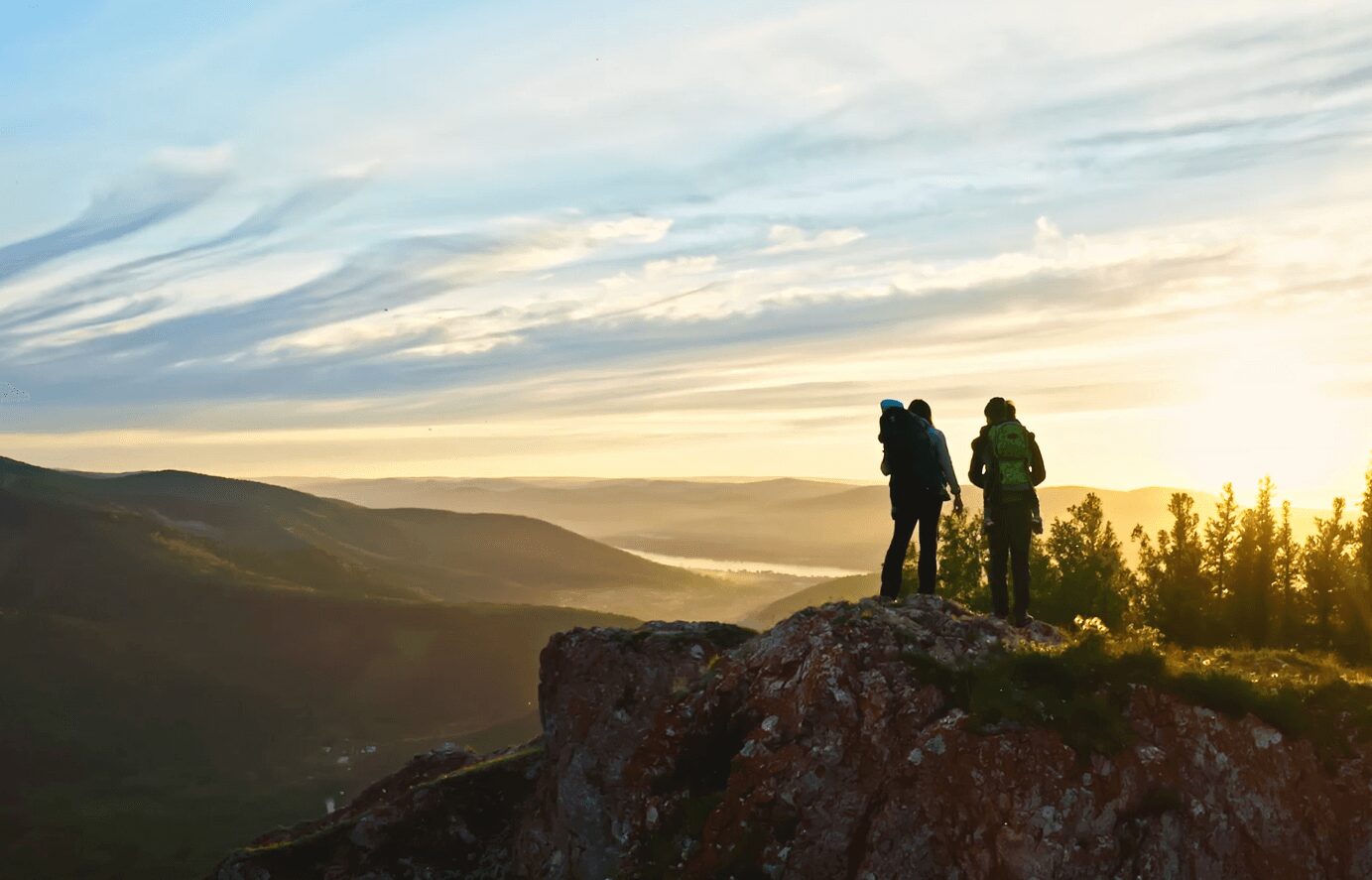
Spring is the season of unpredictable weather. One minute it’s sunny, the next it’s like Mother Nature is having a meltdown. Dressing for a spring hike is like preparing for a chaotic fashion show where the theme is “Whatever the sky decides.”
Layers, Layers, Layers
First off, let’s talk layers. Layers are what you need because spring can’t decide if it wants to be winter or summer. Start with a moisture-wicking base layer.
A synthetic fabric or merino wool works wonders here. Merino wool, by the way, is magical. It will keep you warm or cool and all that without unpleasant smells.
The Mid-Layer Dilemma
Next up is your mid-layer. This is your insulation. Think of it as the buffer between your body and the cruel, ever-changing elements.
Fleece is a solid choice. It’s lightweight, warm, and when you inevitably stuff it in your backpack because the sun decided to make an appearance, it won’t take up much space.
The Outer Layer
For the outer layer, you’re going to want something waterproof and windproof. Let’s face it, spring showers are cute when you’re inside sipping tea, not so much when you’re halfway up a trail.
A good rain jacket that’s breathable will keep you dry without making you feel like you’re hiking in a sauna.
Pants and Shorts
Pants or shorts? That’s the million-dollar question. If you’re asking me, go with convertible pants. They’re hideous but practical.
You can unzip the legs if it gets too hot and, voilà, you have shorts. If you opt for pants, make sure they’re lightweight and quick-drying because nobody enjoys the feeling of soggy pants clinging to their legs.
Footwear
Footwear is crucial. This isn’t the time to break in your new stylish boots. Go with something tried and true. Waterproof hiking boots are ideal, but if you prefer trail runners, just make sure they have good grip and you pair them with wool socks to keep your feet dry and blister-free.
Accessories
Don’t forget your accessories. A hat for the sun, sunglasses to protect your eyes from UV rays (and to look cool), and a pair of gloves just in case it gets chilly.
And, for the love of all things outdoorsy, pack a lightweight scarf or buff. It can double as a headband, face mask, or even a napkin for that impromptu trail snack.
The Backpack Essentials
Lastly, your backpack should have the essentials: a map, compass, snacks, water, first aid kit, and an extra layer. You know, in case spring decides to really throw a tantrum and go from sunny to snowy.
What to Wear Hiking in Summer?
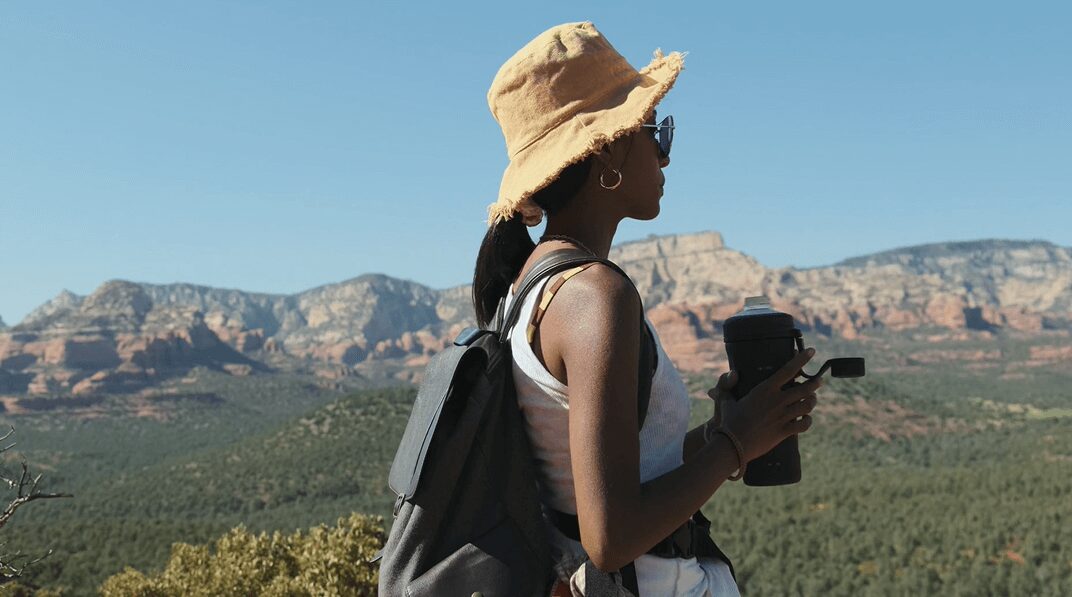
Tops
When it comes to shirts, avoid anything heavy like the plague. Leave your denim jackets and cotton hoodies at home unless you want to melt into a puddle.
Go for lightweight, breathable fabrics like polyester or merino wool if you’re feeling fancy. Personally, I dig a good moisture-wicking t-shirt. It’s like personal air conditioning.
Pants vs. Shorts
Now, this is where it gets interesting. Shorts are great for ventilation, but be ready for all the scratches and bug bites. On the flip side, lightweight hiking pants can save your legs from all those nature-inflicted wounds.
Footwear
Do yourself a favor and invest in a pair of decent hiking boots. Not those cute little sneakers you think can do it all.
And while you’re at it, grab some moisture-wicking socks to prevent the inevitable swamp foot. Trust me, blisters and sweaty feet are a combo straight from hell.
Hats
A wide-brimmed hat is what you really need. Forget the baseball caps because your neck might get sunburned just like that.
A good hat will keep your face from frying. Plus, it’s a great way to hide that greasy, sweaty hair, which is inevitable once you start sweating.
Accessories
Don’t underestimate the power of a good pair of sunglasses and a bandana. Sunglasses will save your eyes from the glaring sun, and a bandana is a multi-tool: wipe your sweat, cover your neck, or use it as a makeshift tourniquet if things go south. It’s important to come prepared.
Layers
Yes, it’s summer, but Mother Nature is fickle. Pack a lightweight jacket or windbreaker. You might start out feeling like you’re hiking in the sun, but by the time you reach higher elevations, you’ll be grateful for that extra layer.
Hydration Pack
I know, not exactly clothing, but crucial. Carry a hydration pack or at least a couple of water bottles. Dehydration is something you should avoid at all costs. Plus, the hydration pack can double as a storage for all the extra snacks you’ll inevitably bring along.
What to Wear When Hiking in Autumn?
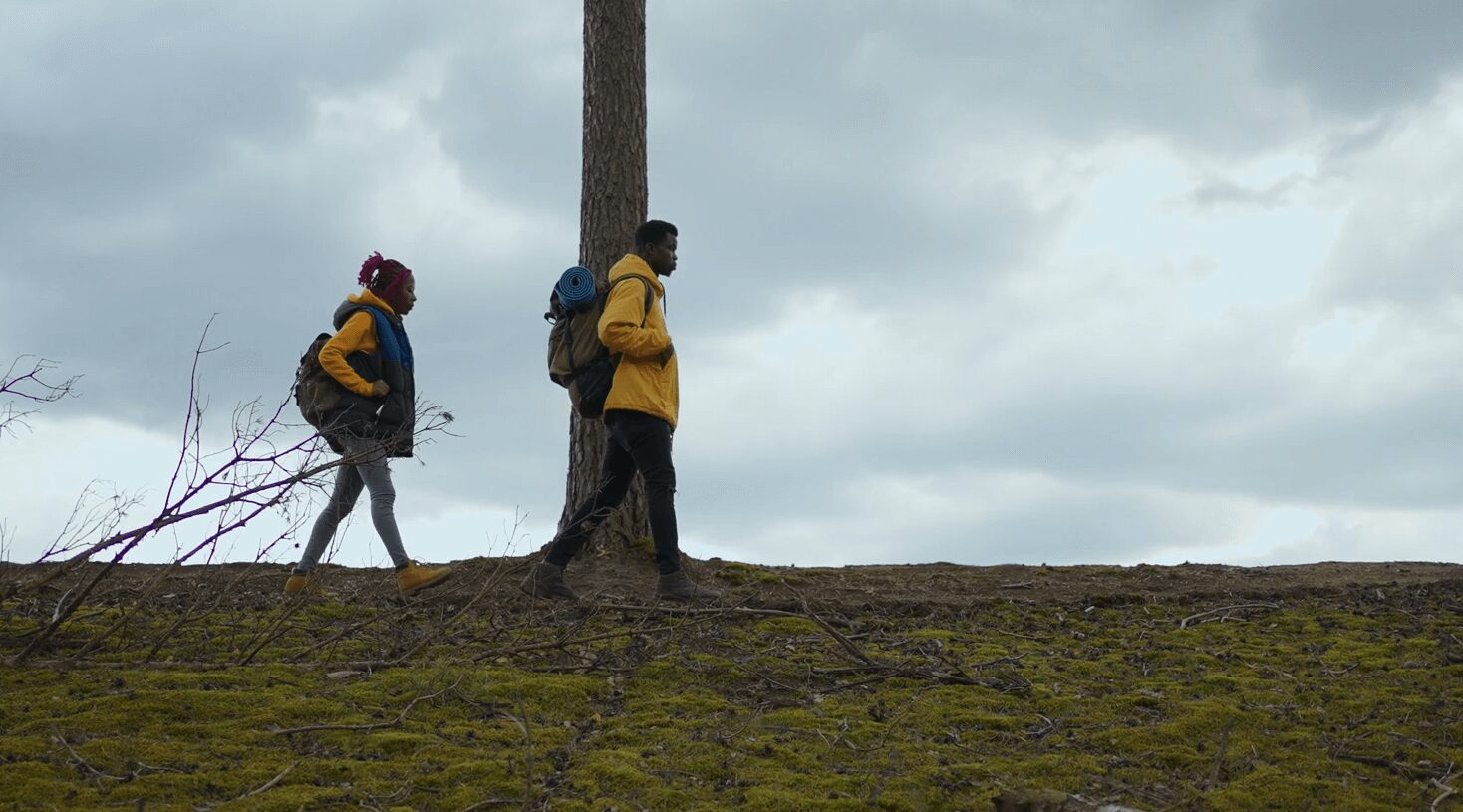
Autumn weather is almost as unpredictable as spring is. One minute you’re freezing, the next you’re sweating like a sinner in church. So, layers are an absolute must.
Start with a moisture-wicking base layer to keep the sweat off your skin. Think merino wool or synthetic materials. Cotton? Leave that for your pajamas.
The Mid-Layer
Next, you need a mid-layer. This could be a fleece or an insulated jacket. This layer is all about warmth, very cozy and comfy. But, make sure it’s breathable.
Outer Layer
Your outer layer is your defense against the elements. A good waterproof, windproof jacket is essential. Remember, autumn loves to surprise you with a sudden downpour or gust of wind.
Pants
Opt for hiking pants that are flexible and moisture-wicking. You might think leggings are just for yoga, but they can be great for hiking, too. Just make sure they are durable. Fall trails can be muddy, and you don’t want to end up looking like a toddler after a playdate.
Footwear
Forget those fancy city sneakers. You need sturdy, waterproof hiking boots with good grip. Trails can be slippery with fallen leaves and mud. Also, wool socks are a must, just like they are for any hiking season. They keep your feet warm and dry, unlike cotton, which just turns into a soggy mess.
Headgear
A beanie can keep your head warm, and a buff can protect your neck and face from chilly winds. Plus, they add to the hiker chic look.
Gloves
Lightweight, waterproof gloves are perfect for autumn hikes. They keep your fingers warm and dry.
Accessories
A good pair of sunglasses, a hat for sunny days, and a small backpack to carry your layers as you shed them are also essential. Don’t forget a water bottle and some snacks.
What to Wear When Hiking in Winter?
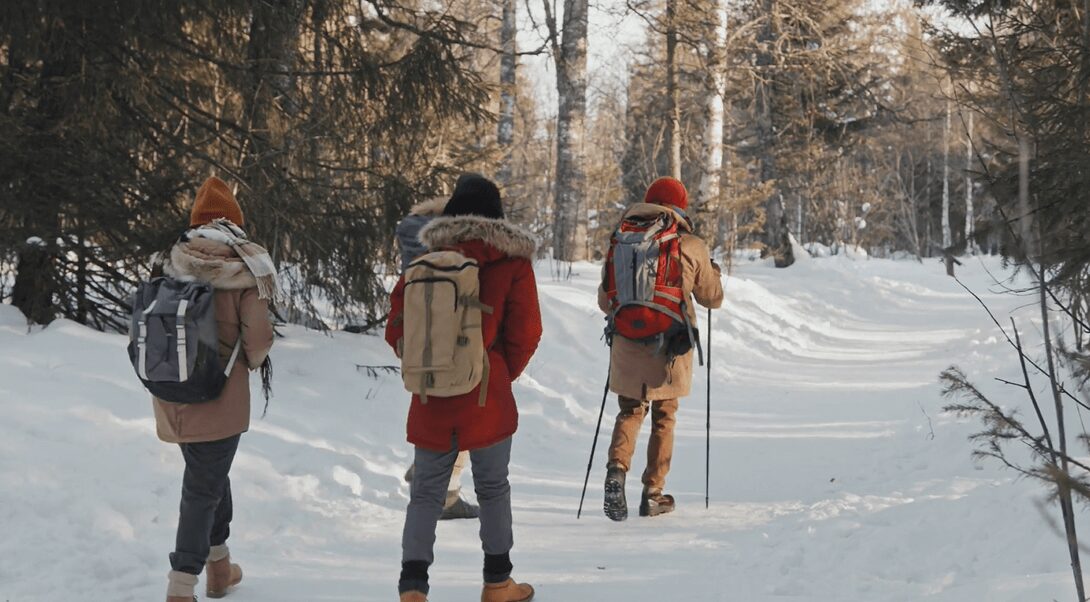
Winter hiking isn’t for the faint of heart, and your first line of defense is layers, same as it was for previous seasons. Remember, we’re not talking about a fashion runway here; think more along the lines of a Michelin Man.
The base layer should be moisture-wicking because, trust me, you don’t want sweat freezing on your skin. Merino wool or synthetic materials are your best bet here. Cotton? Avoid it at all costs.
Insulating Layer
Next up, the insulation layer. This is where you can finally use that puffy jacket that makes you look like you’ve swallowed a duvet. Down jackets are fantastic, but if they get wet, you’re out of luck. Synthetic insulation is a safer bet, but fleece is also a decent option.
Outer Layer
Now for the outer shell. Think of this as your personal shield against the elements. Windproof, waterproof, and breathable are the holy trinity here. GORE-TEX is a popular choice, but really, anything that keeps the wind and water out while letting your sweat escape (because you will sweat, it’s unavoidable) is perfect.
Bright colors are a bonus – not only do you look like a highlighter, but it also makes it easier for rescuers to spot you if you face-plant into a snowbank.
Hats Off (or On)
A good hat is essential because we lose a lot of heat through our heads. A wool or synthetic beanie works wonders.
Gloves
Gloves are non-negotiable. Layered gloves work best: a thin, moisture-wicking glove liner and a thicker, waterproof glove on top. Mittens are great, too, though they make it hard to do anything requiring fingers, like adjusting your backpack or flipping the bird at a particularly tough trail.
Boots and Socks
Your feet are going to be doing most of the work, so treat them well. Insulated, waterproof hiking boots are a must. Pair them with thick, moisture-wicking socks – merino wool is a good choice.
Again, avoid cotton. Bring extra socks because stepping into an icy puddle is something that will be hard to avoid.
Pants
Skip your regular hiking pants and go for something insulated and water-resistant. You might think regular pants are enough, but you’ll regret it when your legs start freezing. Snow pants can work too, just make sure they’re breathable.
Hydration Station
Remember to drink water. Yes, even when it’s freezing out. Your body loses water through breath (all those puffs of steam), and staying hydrated helps regulate your body temperature. Insulated water bottles are a godsend.
Accessories Are Key
Scarves, neck gaiters, and balaclavas are great for keeping the chill out. Sunglasses or goggles are a good idea to protect against snow glare.
Final Words
And there you have it. Your go-to guide for what to wear hiking. Whether you’re tackling your first trail or are a seasoned pro, the right gear makes all the difference.
So gear up, hit the trails, and enjoy the great outdoors!

